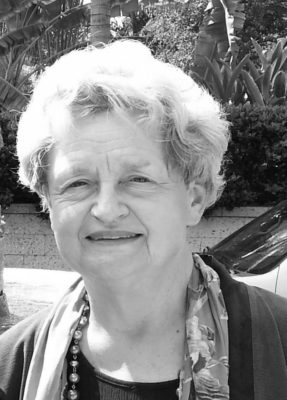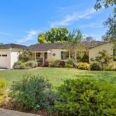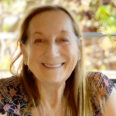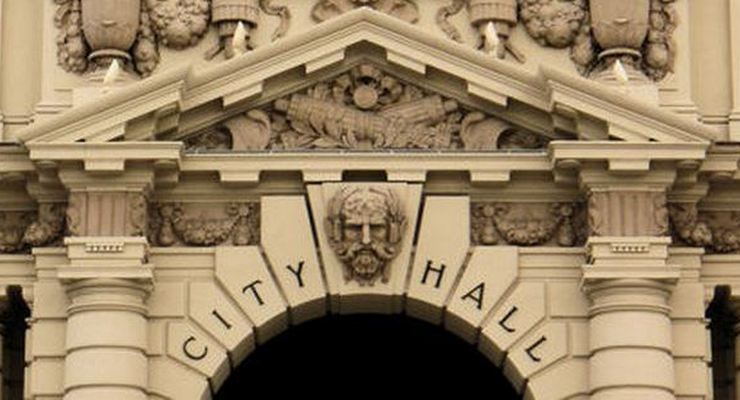
The Central District deserves its own council district. Its residential community is growing by leaps and bounds, but the City is not sufficiently addressing the effects of this tremendous growth. The Central District is the largest residential community in the city, yet the City Council operates as though the Central District is primarily a commercial district. This – plus the fact that the Central District is divided into four council districts – means that no one council person is responsible for the District as a whole. Development fees generated in the Central District to address the effects of increased of development go primarily to the suburbs. Only minor pedestrian and bicycle improvements in the Central District have been made in the past 20 years. The Central District is falling through the cracks.
Why are Central District Residents Concerned?
Many of us who live here are becoming increasingly alarmed at the lack of attention given to Colorado Blvd. and the district as a whole – politically and administratively. The Central District now has 25,000 residents with upwards of 30,000 in the next three years. This is more than 20% of Pasadena’s population. For decades, the Central District has been “chopped up” into four council districts – a miss-match for what is going on. Colorado Boulevard has always been the “main street” that unites the city – the Rose Parade on January 1st and the other 364 days of the year. Politically it is different story. The City Council says the council districts are divided along Colorado Blvd. east-west because of the Rose Parade and, further, that way the Central District is afforded more representation. This would be fine except for the fact that these political divisions split the Central District north-south, effectively “cracking” the district’s community of interest. On top of that, each Central District council district includes large suburban areas of the City that dominate city politics. As evidence, the City Council is comprised exclusively of members who live in the suburbs and do not experience living in the Central District. For the most part, the City Council represents suburban interests – “where the votes are.” The livability of downtown is suffering as a result. Colorado Blvd. acts as a “uniter” for the City but as a political “divider” for the Central District.
Why Are There Four Council Districts in the Central District?
The council district divisions in the Central District are reflective of the Pasadena of the 1960s and 1970s. Very few people lived downtown and were subject to removal in favor of large block redevelopment projects. Downtown residents were seen as “in the way” of progress – tearing down existing buildings was the key creating the “corporate headquarters” city, City policy at the time. The downtown portion of Colorado Blvd. was the center of this strategy and redevelopment deals needed five votes at City Council. Four districts in the downtown meant that at least four councilmembers would have an interest in seeing these projects approved. However, this redevelopment strategy met with fierce opposition from many community members and the redevelopment agency was abolished by initiative in 1981. The City’s policies radically turned from demolishing City buildings to saving them, targeting housing to the downtown. This has worked – spectacularly. The Central District is now the epicenter of multi-family development and a rapidly expanding residential community. But the city’s politics have not evolved to meet that reality. The City views itself primarily as a single-family city and, for the most part, is wary of the multi-family housing in downtown. Many of us in the Central District feel that we are political “orphans” with unmet needs and that the Central District is essentially “gerrymandered” for political benefit.
Unlike suburban areas of the City, the needs of the Central District needs are very different, very complex and interwoven. For the most part, the City Council’s attention has been focused primarily on the needs of the suburbs – “where the votes are”. Most suburban residents have one “go-to” councilmember – the Central District does not. For many in the Central District, this lack of a “go-to” Council member threatens the District’s continuing vitality and sense of place. The City Council’s primary focus in the Central District has been and continues to be on private development – not on the spaces between. No one council member champions and takes responsibility for the Central District as a whole “community of interest”, including its residents. Two current examples are the City’s Redistricting Task Force and the Mayor’s Housing Task Force. These task forces have no appointed representatives from the Central District. With at least 20% of the City’s population and growing, the Central District has no seat at the table.
Why Does This Matter?
Development fees to address the effects of increased development in the Central District go primarily to the suburbs. Different than the suburbs, the Central District is linked and interconnected in unique ways with its concentrated mix of uses, including office buildings, housing, restaurants, shops, residences, medical offices, live theater, movie theaters, a library, the post office and City Hall itself, all within proximity to one another. The foot is the primary way to get around the Central District. Walking, biking, not having to drag your car around and fight traffic to go a few blocks and no need for parking. Strong and interconnected pedestrian networks are needed to make this work– analogous to roadways for cars. Significant pedestrian improvements are necessary to make density work in the Central District – as promised by the City for 30+ years.
Central District improvements must be installed in an integrated way but now has to rely on the coordination and cooperation of separate political interests, not to mention City departments. This is not working. Dividing the area into four separate districts belies the reality on the ground. An example is the proposed Cordova road diet from Lake Avenue to Arroyo Parkway in the Central District. Cordova is a dangerous speedway that cuts through Central District residential areas and is a clear and present danger not on only to cars but also to pedestrians crossing the street and walking on sidewalks. This project has been under study and design for thirteen years, going on fourteen. Many, many accidents have occurred on Cordova– both vehicular and pedestrian – over the 20 years that I have lived here. A key problem is that that Cordova is split between two council districts and lacks a strong champion. The funding is there – generated in large part from Central District development fees. But the City has allocated less than 1% of the fund’s $127,500,000 to pedestrian and bicycle improvements for the district.
How to Redistrict?
The Central District has distinct boundaries – the 210 Freeway on the north, South Lake Avenue on the east, California Blvd. on the south and Pasadena Avenue on the west. Splitting the Central District among four council districts effectively divides the Central District north and south of Colorado Blvd. The Central District’s community of interest is a “walkable, urban, mixed-use lifestyle” that shares common social and economic interests. This community should be represented by one council district with one “go-to” council member, ideally one with daily experience of living in the Central District. Because of its large residential population, the Central District in its entirety may not qualify as its own council district because the requirement for balancing the city’s population among districts may make it impossible. A practical solution is to use Colorado Blvd. as the center of a new district that would encompass significant residential areas north and south of Colorado Boulevard within the larger boundaries of the Central District. In that way, residents of the Central District would not be bypassed in favor suburban areas of Pasadena.
Marsha Rood, FAICP, is Vice President of the Downtown Pasadena Neighborhood Association and served as the City’s Development Administrator from 1982 – 2000



















One thought on “Guest Opinion | Marsha Rood: Downtown Residents Deserve Their Own Council District”
Very well said. The Central District is the most sustainable and pedestrian friendly area of the city, but funds are robbed from it to subsidize the wealthier and less sustainable suburban areas.
It’s time to do exactly as you describe – build strong pedestrian networks and privilege the needs of residents over those of commuters.